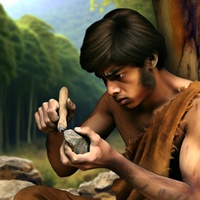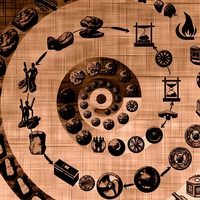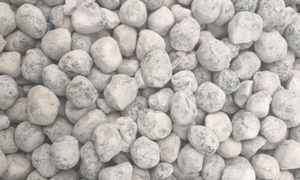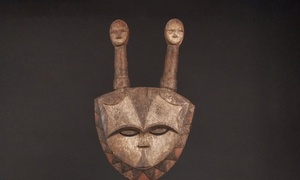The History of Technology - the Iron Age

<p>Iron Age </p><p>Iron, just like copper before it, has been seen in the archeological record to have already existed in many areas in the previous age. It was just seen as the inferior metal for a time due to its ductility.</p><p>Wrought iron, a relatively simple to fabricate form of the metal, was commonly produced during this age. Furnaces could barely get hot enough to sustainably produce the temperatures necessary to craft the more sturdy alternative forms of the metal.</p><p>Not to say it was impossible, steel dating back to this period has been discovered. As a testament to human ingenuity and craft, they came up with a method to use the iron that fell from the very stars, meteorite iron. Meteorites sometimes have a considerable percentage of iron in their makeup. They used these to craft legendary artifacts and weapons that were leagues ahead of other tools of their period.</p><p>Iron and steel could be said to be destined to be the driving force for further human progress due to one simple fact, availability. Iron is the fourth most abundant element that makes up the Earth’s crust, composing around 5% of it. Copper on the other hand makes up a miniscule 0.0067%. Tin even less. It is orders of magnitude easier to find and smelt iron in whatever locale than to embark on the immense trade network one would require to utilize bronze on any significant scale.</p><p>The bump in the vast trade network, which some posit may have caused the Bronze Age collapse, would not be much of an issue with iron.</p><p>The Nok peoples of western Africa, were some of the earliest adopters of iron smelting and their expertise in ironwork and terracotta sculpting is widely heralded even to this day.</p><p>Farming implements, such as the plowshare, coulter and others invented at this time caused a massive shift in the story of humanity. Now, where one hundred labourers were previously required year round to carefully prepare and maintain farmland, the same work could be done by twenty or even ten people.</p><p>This freed up those others to take on more esoteric tasks. Math, science, art and music flourished as more and more people grew out of mere sustenance. People congregated into even larger communities and cities, ideas were exchanged and knowledge grown. The days of blindly discovering were done, humanity could stop looking down, and could afford, to finally look forward. </p><p><br/></p><p>Final Words</p><p>Digging, searching, smelting, farming. Backbreaking labor one could not escape from in the days of discovery. Little time given to ask why, only focused on the struggle to survive. This is what characterized the ages of discovery, where the greatest advancements were prerequisite on learning new ways to utilize what we could dig up from the earth.</p><p>Once we as a species got past the metaphorical jungle, we finally began to truly grow and thrive, though as with the case with all human progress, it also brought out the worst in us.</p><p>From back breaking labour to construct grand edifices like the great pyramids even in the Stone Age, to humbler pursuits like farming tools and systems, the blessings of the Earth were our driving force.</p><p><br/></p><p>Next time we shall talk about when we finally began to plan out our future, when we were no more dependent on finding out some new smiting technique to extract an ore, when we finally began to Engineer our own future.</p>


The History of Technology - the Iron Age
By
 Adah Unobe
Adah Unobe
 Adah Unobe
Adah Unobe
0:00 /
0:00
Other insights from Adah Unobe
Referral Earning
Points-to-Coupons
Insights for you.




 91
91
























































Comments